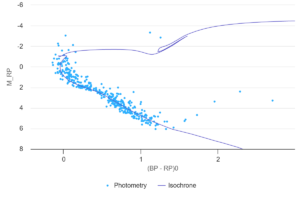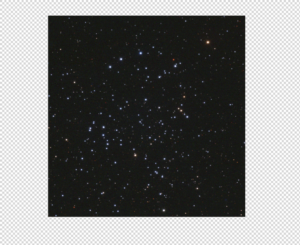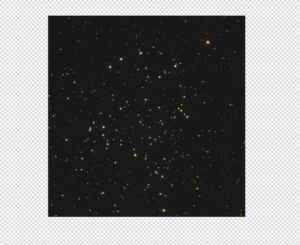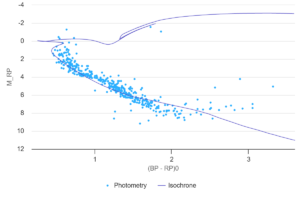ngc 5823 also known as Caldwell 88 is a relatively young open star cluster located in the southern region of the Circinus constellation.
Discovered in 1826 by Scottish astronomer James Dunlop it stands at a distance of 1192 parsecs from earth. (or about 3888 light years)¹
This Star cluster is easily visible from the southern hemisphere with small telescopes or medium powered binoculars as it has a magnitude of 7.9 and is located below the celestial equator² ngc 5823 also spans a distance of roughly 12 light years.

In order to study ngc 5823 and investigate the relationships between the colours, brightness’s, and the age and chemical composition of the cluster as a whole, I collected 15 images using the Prompt 6 telescope located in the Cerro Tololo Inter-American Observatory in Chile with the R, B and V filters using exposure times of 62.99 seconds for the B filter, 23.62 seconds for the V filter and 15.75 seconds for the R filter. Each observation within each filter was executed once with at least an hour between them until there were 5 observations of each filter type. I used Afterglow to create three stacked set of images within their respective filters and then created a tri-colour image by setting each filter stack to its respective colour band. Using the Photometric data obtained through afterglow i was able to use Cluster Astromancers isochrone matching to find the following data.
| RA | DEC | Distance | log(age) | Metallicity | E(B-V) |
226.39° |
-55.61° |
1.85 (kpc) |
8.5 log(yrs) |
0.25 (solar) |
0.55 (mag) |

Using this data i was able to de redden the photo which can be compared below.


Before After
NGC 5823 was also listed in the MWSC Catalogue with the following data values
| RA | DEC | Distance | log(age) | Metallicity | E(B-V) |
| 226.38 | -55.595 |
1189 Parsecs |
8.96 log(yrs) |
not determined |
0.104 (mag) |
which gives the following isochrone matching graph (with my estimation for metallicity).

Although this graph does look quite similar to my previous estimations it has a bit of a different curve which better aligns with the stars lower on the graph.
Overall this project was fairly challenging as it made me think of stars in a different manner then i am used to as there was no formula to follow step by step in terms of picking the best values for each step but it was still very enjoyable and i feel like i learned alot about this star cluster and i am quite satisfied with the colorized images i obtained through this work.